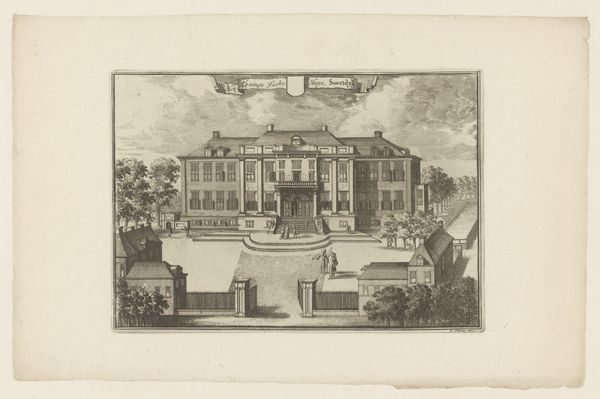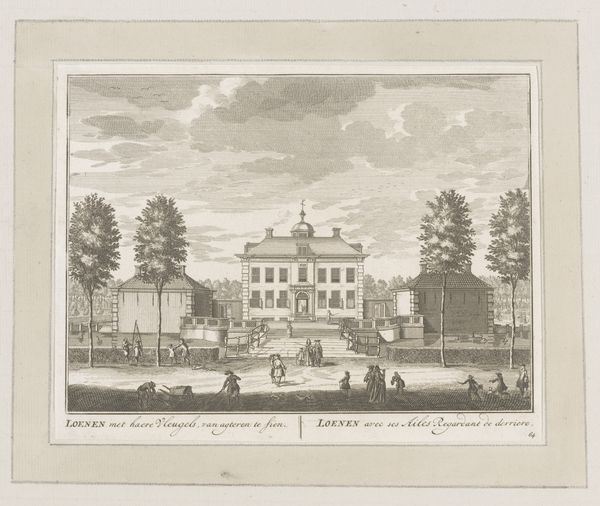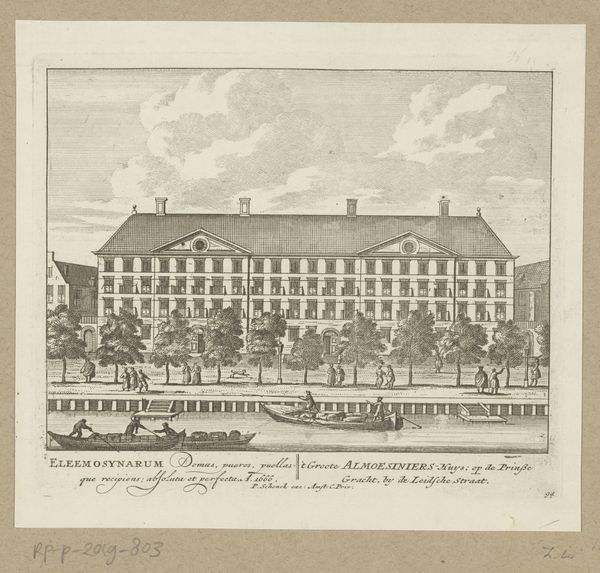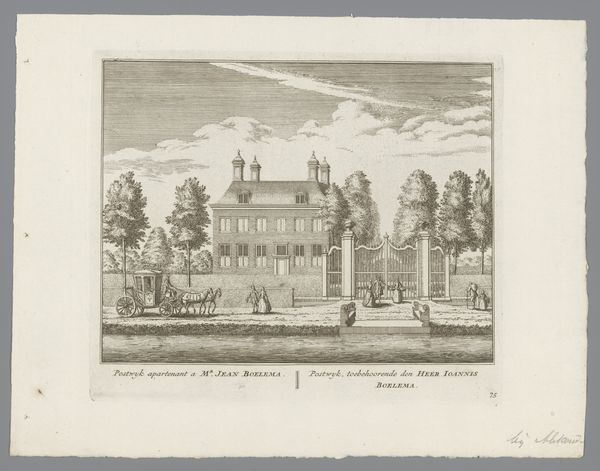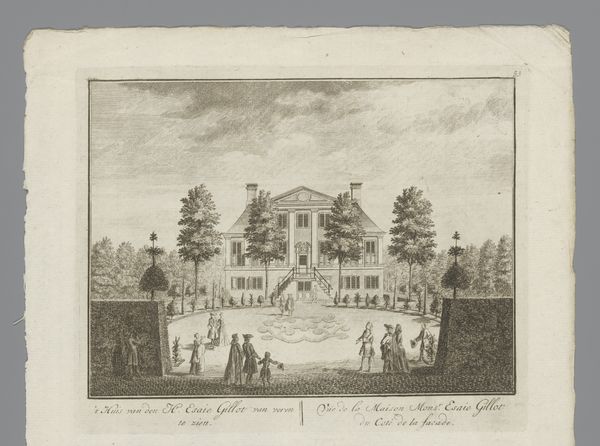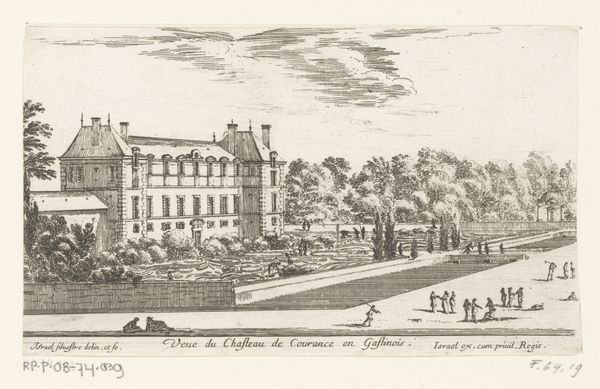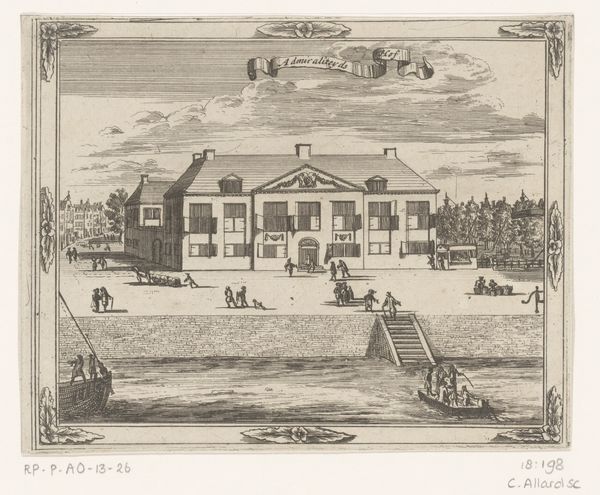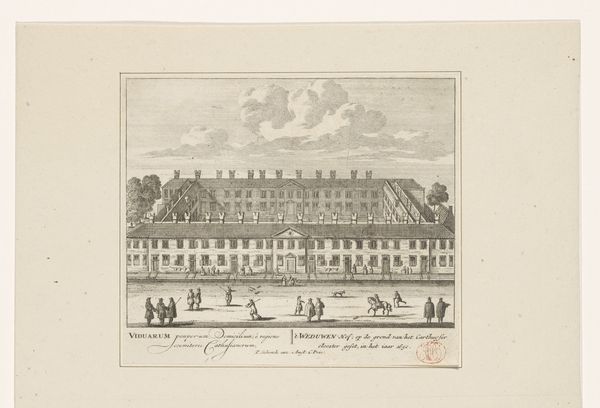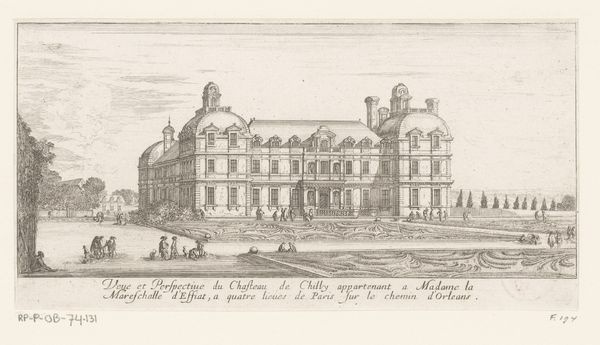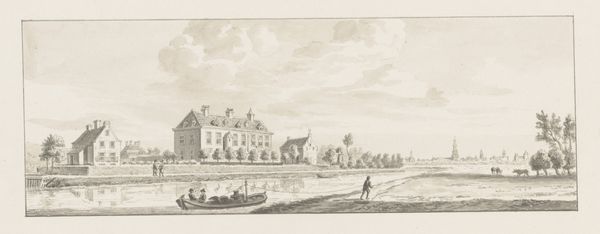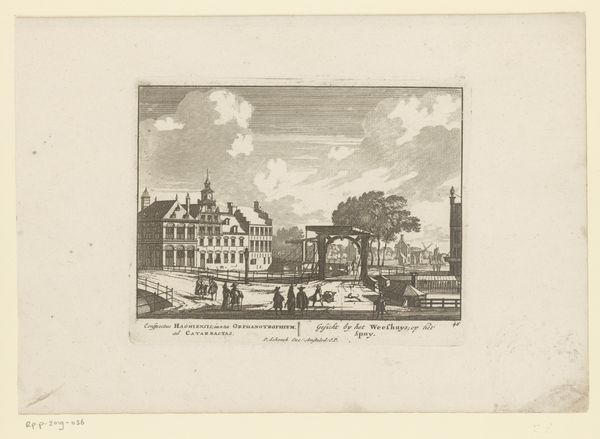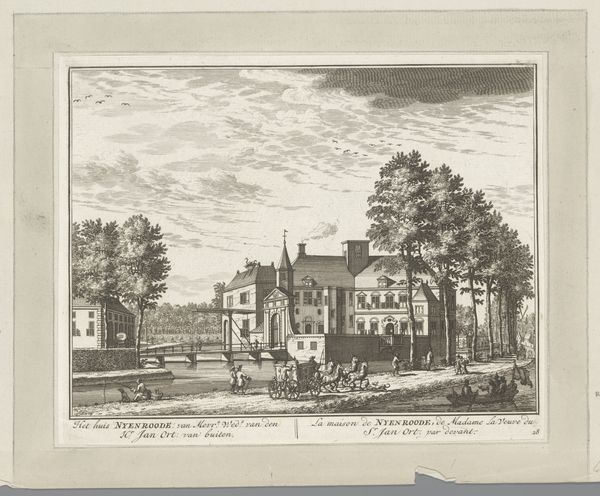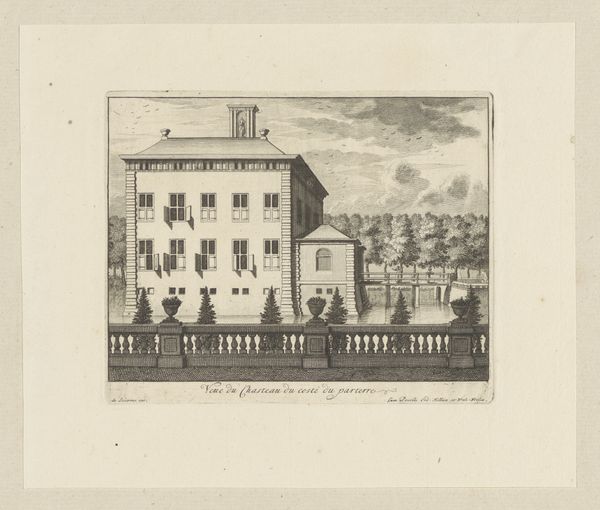
print, etching, engraving, architecture
#
baroque
# print
#
etching
#
old engraving style
#
cityscape
#
history-painting
#
engraving
#
architecture
Dimensions: height 139 mm, width 168 mm
Copyright: Rijks Museum: Open Domain
Curator: This is a print depicting Honselaarsdijk Palace, potentially created between 1696 and 1774, by Cornelis Danckerts II. It combines etching and engraving techniques. Editor: It evokes a powerful sense of order and formality, almost unnerving in its symmetry. The way the artist rendered it creates a stage-like impression, making me feel like a distant observer of courtly life. Curator: It is fascinating to consider the public role of this type of imagery. Prints like this helped disseminate ideals of power and refinement, not only documenting but also constructing the image of the Dutch elite. Consider how the carefully positioned figures amplify the palace's grandeur, furthering the message of authority. Editor: The architectural details stand out: the evenly spaced windows, the statuary atop the building, all symbols of wealth, sophistication, and even immortality. The symbols speak clearly, connecting earthly power to ideas of permanence and divine right. Curator: Absolutely. And we can see echoes of the Baroque style, adapted to the specific needs and sensibilities of the Dutch Republic. It is grandeur, but of a slightly more restrained and civic variety compared to, say, Versailles. We must remember the socio-political environment. Editor: Yes, it's Baroque tempered by Dutch pragmatism. Even the garden— visible at a certain remove— feels symbolic, illustrating control over nature and by extension, control over society. And the horse drawn carriage is another familiar iconographic figure for nobility. Curator: And so these symbols weren't just aesthetic choices but powerful declarations of status and legitimacy. We might consider what this engraving signifies, or rather what it means in light of Honselaarsdijk’s demolition later in the 18th century, an attempt to wipe away all it stood for? Editor: Interesting idea. Even in its afterlife, then, as a memory, the palace and this print remain carriers of deeply felt and culturally embedded symbolic importance, evoking ideas of both greatness and loss. Curator: Precisely. These buildings become palimpsests where politics are quite literally built into the landscape. Editor: Well, looking at it now, I will certainly think more deeply about the way buildings are not only physical but also visual manifestations of authority and deeply engrained social symbols.
Comments
No comments
Be the first to comment and join the conversation on the ultimate creative platform.
